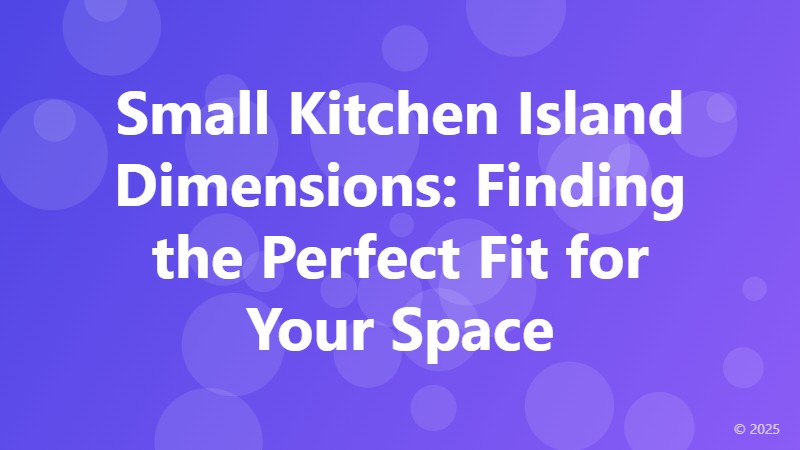Small Kitchen Island Dimensions: Finding the Perfect Fit for Your Space

When it comes to designing a small kitchen, every inch counts. A well-planned kitchen island can be a game-changer, providing additional counter space, storage, and seating. However, finding the perfect small kitchen island dimensions can be a challenge. In this article, we'll explore the ideal dimensions for a small kitchen island and provide tips on how to choose the right one for your space.
Standard Small Kitchen Island Dimensions
While there's no one-size-fits-all solution for small kitchen island dimensions, there are some general guidelines to keep in mind. A typical small kitchen island is between 24 and 48 inches wide, 30 to 42 inches deep, and 36 to 42 inches tall. However, these dimensions can vary depending on the shape and style of your island, as well as the layout of your kitchen.
Factors to Consider When Choosing Small Kitchen Island Dimensions
Before selecting a small kitchen island, consider the following factors:
- Space constraints: Measure the available floor space in your kitchen and consider the traffic flow around the island. A smaller island may be necessary in a tight space.
- Counter space: Think about how much counter space you need for food preparation, cooking, and storage. A larger island may provide more counter space, but may also obstruct traffic flow.
- Seating: If you plan to include seating at your island, consider the size and shape of the stools or chairs. This will impact the overall dimensions of the island.
- Storage: Consider the type and amount of storage you need. A larger island may provide more storage, but may also overwhelm the space.
Designing a Custom Small Kitchen Island
If you're struggling to find a pre-made island that fits your space, consider designing a custom small kitchen island. This allows you to tailor the dimensions to your specific needs and create a unique, functional space. Work with a designer or contractor to create a custom island that meets your requirements and complements your kitchen style.
By considering the standard small kitchen island dimensions and factors such as space constraints, counter space, seating, and storage, you can find or create the perfect island for your kitchen. Remember to prioritize functionality, flow, and aesthetics to create a space that's both beautiful and efficient.